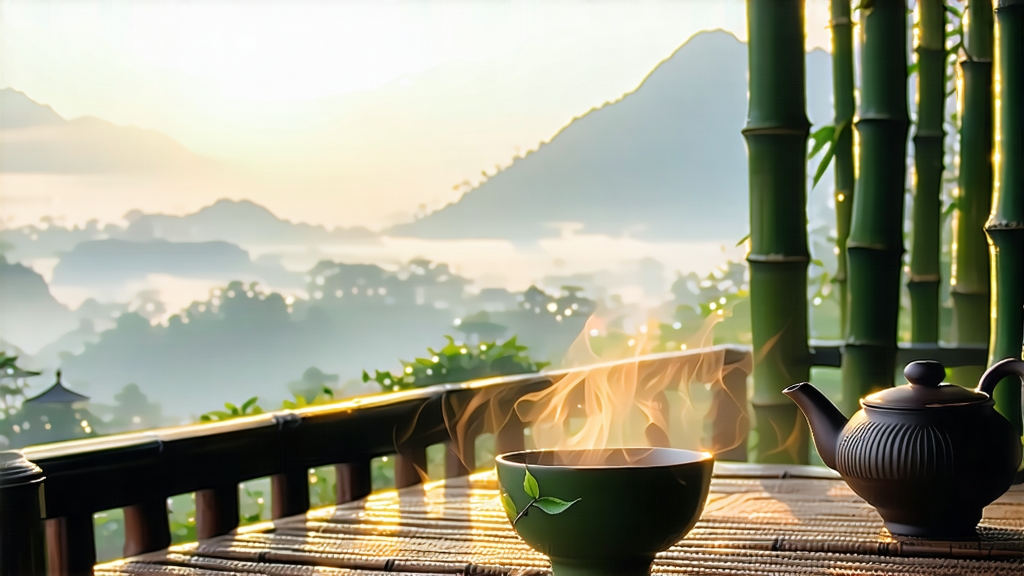
Alishan High-Mountain Oolong is not merely a tea; it is a vertical journey into the clouds. Grown between 1,000 and 1,400 metres on the forested spine of Taiwan’s Chiayi County, these plants inhale fog at dawn and exhale fragrance by noon. The result is a liquor so softly floral that first-time drinkers often whisper “orchid” before they can think of any other word. Yet behind the perfume lies centuries of cross-strait migration, wartime ingenuity, and a post-war tea renaissance that turned a single Qing-era cultivar into one of the world’s most coveted oolongs.
Historical roots
The story begins in Fujian during the 18th century, when the Qing court encouraged Han settlers to open the mountain interior of Taiwan. Among the belongings of these pioneers were cloth-wrapped cuttings of the Qing Xin (literally “green heart”) tea bush. Once transplanted to the cooler, thinner air of Alishan, the cultivar slowed its growth, thickened its leaf cuticle, and began stockpiling aromatic compounds that lowland bushes never needed. By the 1980s, when Taiwan’s economy pivoted toward high-value agriculture, Alishan farmers realised that elevation itself could be branded. They coined the term “high-mountain tea” (gaoshan cha) and built overnight factories of glass and steel beside cloud-veiled terraces, forever changing the island’s tea map.
Micro-terroir in the sky
Alishan is not one peak but a 20-kilometre ridge system where bamboo, cedar, and cherry create a living mist net. Temperatures can swing 15 °C between day and night, forcing the bush to alternate between photosynthetic sprint and metabolic rest. Ultraviolet intensity at 1,200 metres is 30 % stronger than at sea level, triggering the production of catechins and monoterpene alcohols—the molecules responsible for the tea’s signature honeysuckle note. Volcanic shale soil, rich in porphyritic minerals, drains quickly yet holds just enough moisture for the roots to struggle, concentrating flavour further. In spring, when the mountain is wrapped in Pacific fog, leaf tips grow so slowly that one kilogram of finished tea requires 12,000 hand-plucked shoots—roughly four hours of nimble labour for an experienced plucker.
Crafting the “green fragrance” style
Unlike the heavily roasted oolongs of Wuyi, Alishan belongs to the qing-xiang (light fragrance) school. The goal is to capture the mountain’s cool breath inside the leaf. Immediately after picking, the leaves are solar-withered for 20–30 minutes on large bamboo trays set outside the factory. The high-altitude sun is gentle, so the enzyme responsible for grassy notes (lipoxygenase) is tamed without bruising the cell walls. Next comes indoor withering on slatted racks, where conditioned air at 22 °C and 65 % humidity coaxes the leaf to lose 8 % moisture every hour. Turners fluff the leaf every fifteen minutes, a rhythmic ritual that continues through the night.
At 3 a.m. the master arrives, rubbing a handful of leaves between his palms until the edges bruise and the room fills with peach skin aroma. This partial maceration triggers oxidation, but only at the cuticle fringe; the interior remains green. After 45 minutes the leaf is fired in a tumble dryer at 130 °C for three minutes—just long enough to halt oxidation at 20 %. What follows is the most Taiwanese of inventions: the ball-rolling machine. For 40 minutes the warm leaves are tumbled inside a heated, convex drum that gradually compresses them into tight jade pearls. The cycle—brief heating, rolling, resting—is repeated 18 times, locking in flavour while developing the marble-like sheen that connoisseurs look for. A final low-temperature bake at 80 °C for six hours reduces moisture to 3 % without colouring the leaf, preserving the alpine signature.
Grades and seasonality
International buyers will encounter three commercial grades. “Hand-picked spring” is harvested in early May from plots above 1,200 m; the leaf is one bud and two leaves, yielding a liquor that tastes like pear blossom and fresh cream. “Summer tea,” picked in July after the monsoon, is less floral but sweeter, often described as white peach with a mineral snap. “Winter flake,” harvested in late October when growth has almost stopped, is the rarest